Blanch, baby, blanch! A war is waging in your refrigerator! You harvested green beans and broccoli and popped them into the icebox (telling my age as that is what they were called when I was a kid.) The veggies should be good to go for days in there right? No!!! As soon as they are picked, the decaying process starts and it doesn’t quit until they are eaten, processed or thrown into the compost bin.
So what to do? Blanch, baby, blanch! Blanching is a process that heats the food without actually cooking it. When you steam or boil foods for a short time, it deactivates the enzymes that are working to breakdown the food quality and nutrients. Blanching is heating food briefly and then shocking it into ice water to stop the cooking process; this is blanching. Steam blanching is using a steamer to heat the food instead of boiling it.
This is organic spinach that I am preparing to freeze. By blanching first, I ensure that all the enzyme action is stopped so that the spinach still retains all its’ healthy goodness.
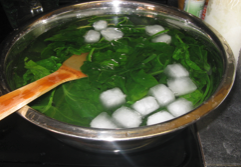 The biggest mistake I make when blanching is not having sufficient ice to keep the blanching water cold enough. It must be frigid water to take on the heat of the steamed veggies. I drain the spinach and lay it out on a cookie sheet which I place in the freezer to quick freeze the spinach. Then I either zip-lock it for short term or vacuum bag it for use this winter.
The biggest mistake I make when blanching is not having sufficient ice to keep the blanching water cold enough. It must be frigid water to take on the heat of the steamed veggies. I drain the spinach and lay it out on a cookie sheet which I place in the freezer to quick freeze the spinach. Then I either zip-lock it for short term or vacuum bag it for use this winter.
Blanching brings out the deep colors of the veggies for a great presentation when cooking with them later.
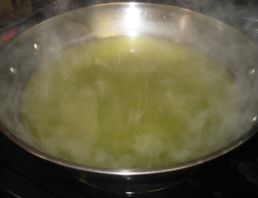 See how green this leftover water is after blanching the spinach? It’s nutrients that you can recycle. Allow it to cool and use it to water a container of plants or water the flock with it. Every bit helps! Hope you try blanching some veggies soon. Got to go harvest! Annie May
See how green this leftover water is after blanching the spinach? It’s nutrients that you can recycle. Allow it to cool and use it to water a container of plants or water the flock with it. Every bit helps! Hope you try blanching some veggies soon. Got to go harvest! Annie May

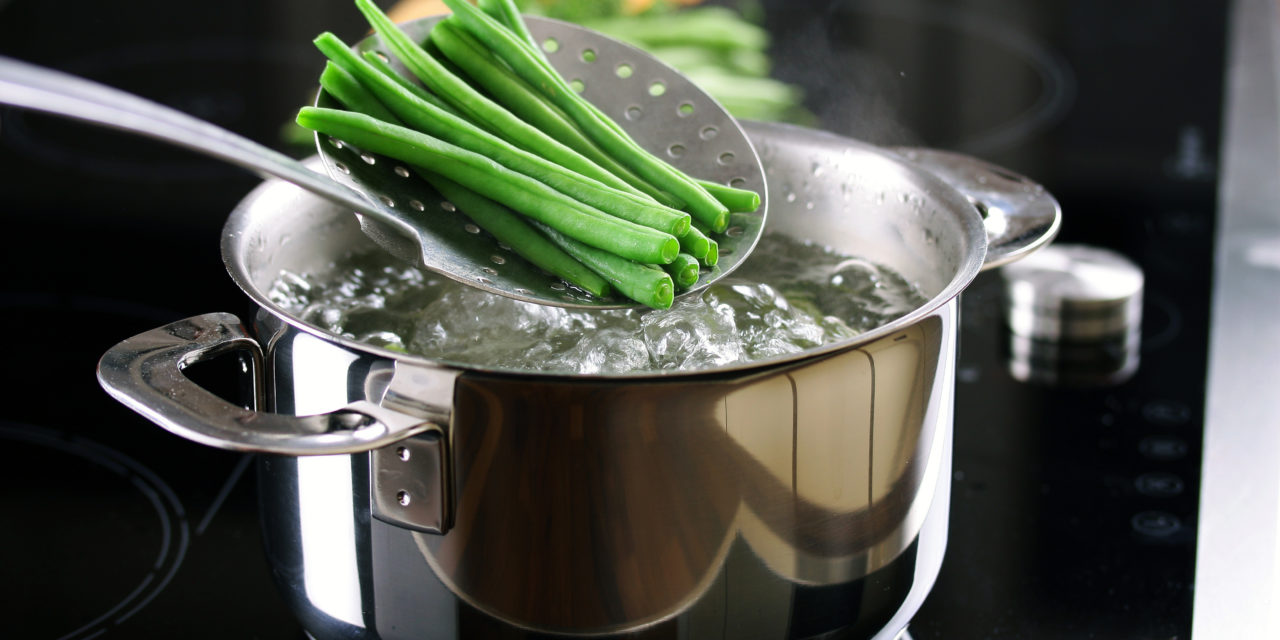


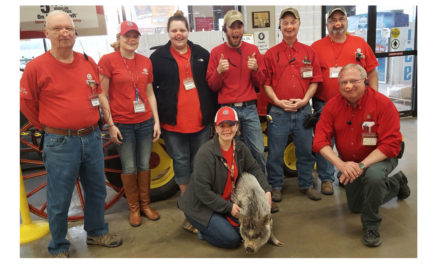
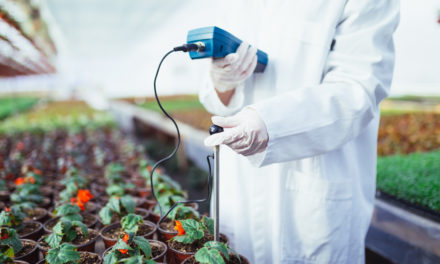

If you have an email alert list for this blog, I would like to be on it. Thank you
Loved reading!
I didn’t know blanching included the ice. I thought it was just quickly boiling the green beans for 3 minutes. Thank you,